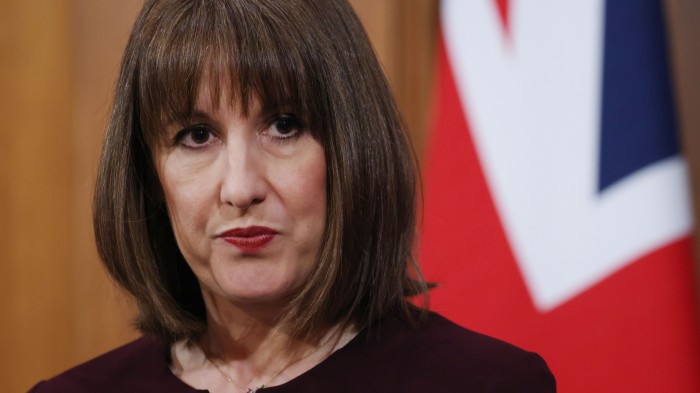Unlock the Editor’s Digest for free
Roula Khalaf, Editor of the FT, selects her favourite stories in this weekly newsletter.
Rachel Reeves will face a shortfall of up to £18bn in her spending plans by the end of the decade unless a risky bet on rapid gains in UK public service productivity comes good, a think-tank warned on Friday.
The chancellor is expecting all government departments to make efficiency savings of at least 5 per cent in their budgets by 2028-29, including from improving the delivery of public services and cutting back office costs.
The targets would boost public service funding productivity by 2.3 per cent, a feat unmatched in recent history and one that would reduce the cost of delivering a given level of services.
Over more than two decades prior to the Covid-19 pandemic, the cost of public service provision tended to rise, not fall.
If instead funding productivity remained flat, the chancellor would face a “major fiscal issue” as she would be under pressure to top up spending by £18bn in 2028-29, including extra for devolved governments, in order to achieve the same level of performance in public services, the Institute for Fiscal Studies found.
“This isn’t the first government to promise to reduce waste, raise productivity and improve the efficiency of public services . . . Such promises haven’t always materialised,” said Olly Harvey-Rich, IFS research economist.
If the government delivered only half the planned productivity improvement, it would face a shortfall of £9bn.
The task of boosting productivity is even more urgent for Reeves than for her predecessors, given the pressure on the government to turn around public services without breaking its manifesto promises on tax, or further eroding its wafer-thin headroom against its fiscal rules.
“If this government wants to stick to its spending plans while also fulfilling its ambitious commitments . . . serious productivity growth is essential,” Harvey-Rich said.
Public service funding productivity measures the outputs or outcomes of the system in relation to the amount of money spent on it.
On a different official measure, the government’s plans imply that the productivity of inputs such as staffing and equipment would increase by 1 per cent a year up to 2028-29, the IFS found.
That would be more than four times faster than the 0.2 per cent a year growth rate seen between 1997 and 2019, and well above the 0.7 per cent a year growth recorded in the decade up to 2019 when austerity policies were in full swing.
One element of the government’s efficiency drive that does have historical precedent is the planned £2bn cut in administrative spending, which is due to be delivered through a 10 per cent real-terms cut for almost all departments in an initial phase up to 2028-29.
Even larger cuts than this were implemented under the Conservative-led coalition government that took power in 2010, the IFS noted.
But the think-tank warned that demanding identical savings from departments facing very different challenges could backfire, if penny-pinching in central areas such as IT or procurement hit front-line services.
The think-tank saw greater potential in improving the day-to-day delivery of public services, in particular restoring NHS productivity to pre-pandemic levels.
However, it warned that savings in other areas might prove elusive, especially where they relied on delivering large IT programmes, or on AI technologies whose benefits remained highly uncertain.

